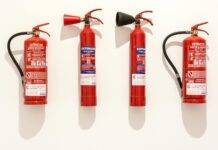
Crane Safety Quiz 2024
Crane safety is a critical aspect of construction and industrial operations. Ensuring the safety of personnel and property is paramount in any worksite, and understanding and adhering to proper safety protocols are essential components of responsible operations.
Introduction to Crane Safety
Crane safety encompasses a range of procedures and protocols designed to mitigate risks associated with crane operations. It involves adherence to safety regulations, training, maintenance, and implementing measures to prevent accidents.
Importance of Crane Safety
The significance of crane safety cannot be overstated. Accidents involving cranes can result in severe injuries, fatalities, property damage, and project delays. Prioritizing safety not only safeguards lives but also enhances efficiency and productivity.
Crane Safety Regulations
Governments and regulatory bodies have established stringent guidelines and standards to ensure crane safety. Understanding and complying with these regulations are imperative for all stakeholders involved in crane operations.
Types of Cranes and Associated Risks
Different types of cranes pose unique risks. From tower cranes to mobile cranes, each has specific safety considerations. Understanding these risks is vital for implementing adequate safety measures.
Preventing Crane Accidents
Proactive measures such as proper training, regular inspections, and adherence to safety protocols significantly reduce the risk of accidents. Implementing robust preventive strategies is key.
Training and Certification for Crane Operators
Qualified and certified crane operators play a pivotal role in ensuring safety. Rigorous training programs and certifications validate their competence and understanding of safety protocols.
Inspecting and Maintaining Cranes
Regular inspections and diligent maintenance routines are fundamental in identifying potential issues and ensuring the proper functioning of cranes. Timely repairs and upkeep minimize the risk of accidents.
Safety Measures During Crane Operations
Adhering to safety protocols during crane operations, such as load limits, proper signaling, and adequate clearance, mitigates potential risks and enhances overall safety.
Emergency Preparedness for Crane Incidents
Being prepared for unforeseen events is crucial. Having emergency response plans in place ensures swift and effective actions in the event of a crane-related incident.
Here are some multiple-choice questions (MCQs) on Crane Safety Quiz 2024:Question 1: What is the primary purpose of a crane load chart?
A) To calculate the crane’s maximum speed
B) To determine the crane’s lifting capacity at various boom lengths and angles
C) To estimate the fuel consumption of the crane
D) To identify the crane’s tire pressure requirements
Answer: B) To determine the crane’s lifting capacity at various boom lengths and angles
Question 2: Which of the following is an essential step before operating a crane?
A) Conducting a thorough pre-operation inspection
B) Starting the crane immediately after reaching the site
C) Skipping the safety briefing if familiar with the crane model
D) Wearing personal protective equipment during operation
Answer: A) Conducting a thorough pre-operation inspection
Question 3: When should an operator use a tagline during crane operations?
A) Only when lifting heavy loads
B) When guiding a load to prevent swinging or spinning
C) Taglines are not necessary for safe crane operation
D) When the load is securely attached to the crane hook
Answer: B) When guiding a load to prevent swinging or spinning
Question 4: What action should be taken if a crane comes into contact with a power line?
A) Wait for the power company to disconnect the line
B) Lower the load and try to move the crane away from the line
C) Continue operations as long as the power line isn’t visibly damaged
D) Immediately drop the load and stay inside the crane until help arrives
Answer: D) Immediately drop the load and stay inside the crane until help arrives
Question 5: Why is it important to know the crane’s load capacity?
A) To impress supervisors with technical knowledge
B) To determine the crane’s resale value
C) To ensure safe lifting operations and prevent accidents
D) To estimate the maintenance costs of the crane
Answer: C) To ensure safe lifting operations and prevent accidents
Question 6: What is the purpose of outriggers on a crane?
A) To extend the reach of the crane boom
B) To provide stability and prevent tipping during lifting operations
C) To control the crane’s lifting speed
D) To store additional lifting equipment
Answer: B) To provide stability and prevent tipping during lifting operations
Question 7: What does the term “slew” refer to in crane operations?
A) The process of securing the load to the crane hook
B) The rotation of the crane’s upper structure or turntable
C) The lifting of heavy loads using multiple cranes simultaneously
D) The adjustment of the crane’s boom length
Answer: B) The rotation of the crane’s upper structure or turntable
Question 8: Why is it important to check the ground conditions before setting up a crane?
A) To estimate the time required for the lifting operation
B) To determine the number of personnel needed for the job
C) To ensure the ground can support the crane’s weight and prevent tipping
D) To decide on the crane’s operational mode
Answer: C) To ensure the ground can support the crane’s weight and prevent tipping
Question 9: What is a “dogging” operation in crane terminology?
A) Securing the load with additional ropes after it’s lifted
B) Controlling the crane’s movement through a remote device
C) The process of stabilizing the crane during high winds
D) Rigging and securing a load during lifting and movement
Answer: D) Rigging and securing a load during lifting and movement
Question 10: Which safety device helps prevent the crane from lifting loads beyond its capacity?
A) Load moment indicator (LMI)
B) Boom angle indicator
C) Crane operator’s license
D) Weight distribution sensor
Answer: A) Load moment indicator (LMI)
Technological Advancements in Crane Safety
Innovations like proximity sensors, automated safety systems, and improved materials contribute to enhancing crane safety. Embracing technological advancements augments safety measures.
Cost of Non-Compliance with Crane Safety
Non-compliance with safety regulations can lead to hefty fines, legal repercussions, project delays, and reputational damage. The financial and operational costs of negligence are substantial.
Conclusion
Prioritizing crane safety is a shared responsibility among all stakeholders in construction and industrial sectors. Implementing comprehensive safety measures, leveraging technology, and fostering a safety-oriented culture are vital for minimizing risks and ensuring a safer working environment.
Slip Trip and Fall Safety Quiz
Personnel Protective Equipment Safety Quiz
FAQs on Crane Safety
- Why is crane safety crucial in the construction industry? Crane safety is critical in construction due to the inherent risks involved in crane operations. Accidents can cause severe injuries, fatalities, property damage, and project delays. Prioritizing safety minimizes these risks, ensuring a secure working environment.
- What are the common causes of crane accidents? Common causes include operator error, mechanical failures, improper assembly, exceeding load capacities, electrical issues, and environmental factors like high winds or unstable ground.
- How frequently should cranes be inspected? Cranes should undergo regular inspections as per regulatory guidelines. Generally, this involves daily, weekly, monthly, and annual inspections, with more frequent checks if the crane is in heavy use.
- What training is necessary for becoming a certified crane operator? To become a certified crane operator, individuals need proper training from accredited programs. This includes learning crane operations, safety protocols, load calculations, and hands-on experience. Certification requirements vary by region.
- Are there penalties for non-compliance with crane safety regulations? Yes, non-compliance can result in substantial penalties, fines, legal actions, project delays, and reputational damage. Authorities enforce strict penalties to ensure adherence to safety regulations and prevent accidents.
























